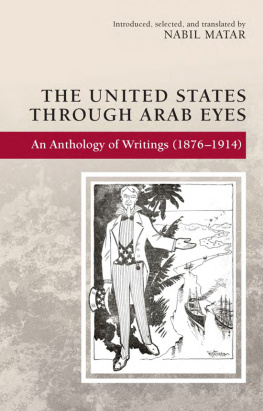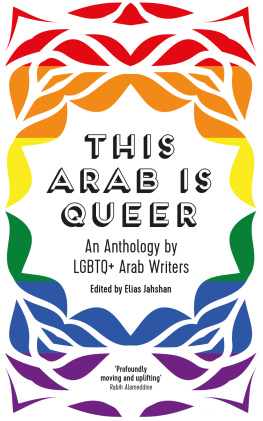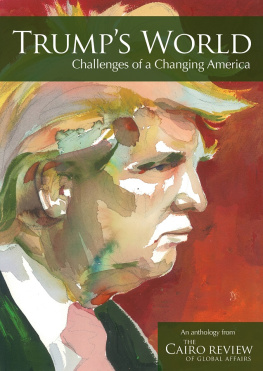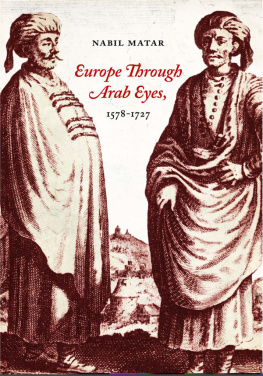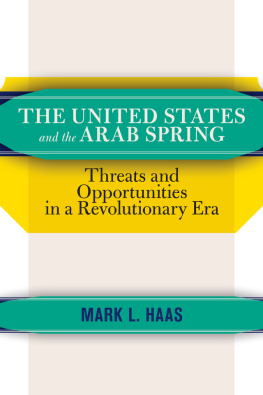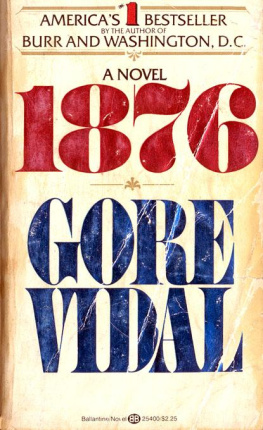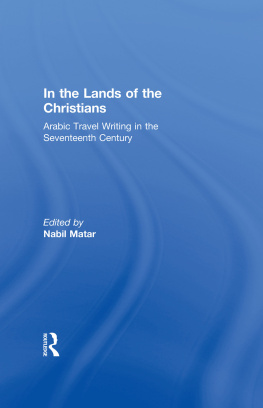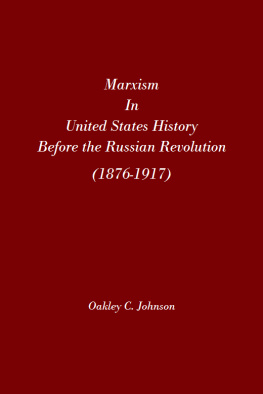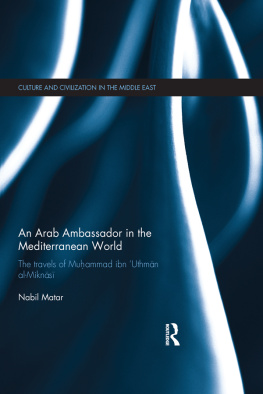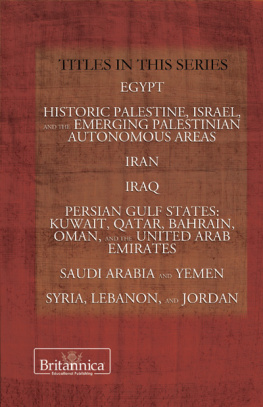Matar Nabil - The United States Through Arab Eyes: An Anthology of Writings (1876-1914)
Here you can read online Matar Nabil - The United States Through Arab Eyes: An Anthology of Writings (1876-1914) full text of the book (entire story) in english for free. Download pdf and epub, get meaning, cover and reviews about this ebook. publisher: Edinburgh University Press, genre: Art. Description of the work, (preface) as well as reviews are available. Best literature library LitArk.com created for fans of good reading and offers a wide selection of genres:
Romance novel
Science fiction
Adventure
Detective
Science
History
Home and family
Prose
Art
Politics
Computer
Non-fiction
Religion
Business
Children
Humor
Choose a favorite category and find really read worthwhile books. Enjoy immersion in the world of imagination, feel the emotions of the characters or learn something new for yourself, make an fascinating discovery.
- Book:The United States Through Arab Eyes: An Anthology of Writings (1876-1914)
- Author:
- Publisher:Edinburgh University Press
- Genre:
- Rating:4 / 5
- Favourites:Add to favourites
- Your mark:
- 80
- 1
- 2
- 3
- 4
- 5
The United States Through Arab Eyes: An Anthology of Writings (1876-1914): summary, description and annotation
We offer to read an annotation, description, summary or preface (depends on what the author of the book "The United States Through Arab Eyes: An Anthology of Writings (1876-1914)" wrote himself). If you haven't found the necessary information about the book — write in the comments, we will try to find it.
Matar Nabil: author's other books
Who wrote The United States Through Arab Eyes: An Anthology of Writings (1876-1914)? Find out the surname, the name of the author of the book and a list of all author's works by series.
The United States Through Arab Eyes: An Anthology of Writings (1876-1914) — read online for free the complete book (whole text) full work
Below is the text of the book, divided by pages. System saving the place of the last page read, allows you to conveniently read the book "The United States Through Arab Eyes: An Anthology of Writings (1876-1914)" online for free, without having to search again every time where you left off. Put a bookmark, and you can go to the page where you finished reading at any time.
Font size:
Interval:
Bookmark:

The United States through Arab Eyes
An Anthology of Writings (18761914)
Introduced, selected, and translated by Nabil Matar
EDINBURGH
University Press
Edinburgh University Press is one of the leading university presses in the UK. We publish academic books and journals in our selected subject areas across the humanities and social sciences, combining cutting-edge scholarship with high editorial and production values to produce academic works of lasting importance. For more information visit our website: www.edinburghuniversitypress.com
editorial matter and organisation Nabil Matar, 2018
Edinburgh University Press Ltd
The Tun Holyrood Road
12 (2f) Jacksons Entry
Edinburgh EH8 8PJ
Typeset in 10/12 Goudy Old Style by
IDSUK (DataConnection) Ltd, and
printed and bound in Great Britain
A CIP record for this book is available from the British Library
ISBN 978 1 4744 3435 5 (hardback)
ISBN 978 1 4744 3436 2 (paperback)
ISBN 978 1 4744 3437 9 (webready PDF)
ISBN 978 1 4744 3438 6 (epub)
The right of Nabil Matar to be identified as Editor of this work has been asserted in accordance with the Copyright, Designs and Patent Act 1988, and the Copyright and Related Rights Regulations 2003 (SI No. 2498).
The illustration on the front cover is from Mikhail Rustum, Diwan (1909), 183.
Contents
Acknowledgements
I wish to thank many colleagues and friends who helped me during the last three years while I worked on this text.
I start with Professor Hani Bawardi, University of Michigan, Dearborn, whose book on The Making of Arab Americans and his friendship first motivated me to this new area of research. I also wish to thank Professor Muhammad Shaheen of the University of Jordan for his suggestion of texts and for discussing with me his translation strategies. And of course, Professor Wadad Kadi, who has been my mentor since our AUB days: she was ever ready with her philological insights and assistance. I benefited from the various panels at MLA and MESA that dealt with Arabic literature and history in the United States, and from conversations with Professors Nouri Gana, Tahia Abdul Nasser, Wal Hassan, Suha Kudsieh, Nizar Hermes and others.
I am grateful to Ms Samira Kawar for introducing me to her ninety-two-year-old Jerusalemite mother and sending me the newspaper article and comments by Mr Hazem Nusseibeh (Lest we forget Christian Palestinians of Jerusalem, Jordan Times, 15 July 2017). I wish to thank Ms Nawal A. Kawar of the Library of Congress for her help in locating a lost document. I am very grateful to Ms Amy Frankfurt for her support and inspiration; Ms Meghan Philips for her research on Native Americans in early-twentieth-century newspapers; and Mr David Faust of the Wilson Library at the University of Minnesota who sent me links to digitized copies of early Arabic newspapers in the United States. Many students in my classes on Arabic Writings at the University of Minnesota read and commented, sometimes quite insightfully, on sections of the introduction. Thanks are also due Professor Katharine Gerbner who convened (and continues to convene) the Atlantic Workshop at the University of Minnesota, and to Professor Kirsten Fischer, who offered me insightful comments. I am grateful to the (then) Chair of the English Department, Professor Ellen Messer-Davidow, for extending to me funds which I used to conduct research at the NYPL in Spring 2016. I am also grateful to Professor Erika Lee for giving me the opportunity to share with her and her seminar an early version of my introduction, and for her inspiring role in the Immigration Center at the University of Minnesota where I spent many an hour going through the extensive collection of material on early Arab America. On 26 April 2018, I gave the Farhat J. Ziyadeh Distinguished Lecture in Arab and Islamic Studies at the University of Washington, based on the research in this book. I am grateful to Professor Selim S. Kuru for the invitation and to the family of the late Professor Ziyadeh for sponsoring the lecture.
I wish to thank my former student Ian Larson, who has been my friend for years, and who is preparing to launch on a new phase in his life. His comments on the typescript of this book were invaluable. And last but not least, I wish to thank my life-long friend Professor Mohammad Asfour, winner of the State Award for Excellence in Translation (Cairo, 2017), for agreeing to go over the translation; I could not have hoped for sharper and more experienced eyes than his.
As always, I think of Abraham and Hady, in Atlanta and Ramallah respectively, forging ahead in life. Sons of immigrants, may they ever celebrate their multiple identities as Americans and Arabs, adopting the best from those tumultuous worlds.
I was awarded the Samuel Russell Chair for the Humanities during my work on this book which enabled me to complete my research in a timely manner. I am grateful to Dean John Coleman and to Associate Dean Ana Paula Ferreira for their support, and to Mr and Mrs Gesell of St Paul, Minnesota, who generously endowed the Chair.
This book is dedicated to G.H. for whom immigration to the United States offered the opportunity to realize dreams, to achieve goals, and to excel. Since we met four decades ago, she has been a friend and a confidante. But on that day in July 2006, she was pure heroism always, always to be remembered, cherished, and thanked.
Some Notes on the Translation
With the exception of Khalil al-Sakakinis letters, the texts below were written and published during the period commonly known as the Nahda the Renaissance of Arabic thought and literature which started in the second half of the nineteenth century. After centuries of decline under Ottoman rule, writers from Greater Syria and Egypt revived their mastery of classical Arabic at the same time that they started studying Western literature and publishing novels and articles to entertain and edify their compatriots from the Mediterranean to North America.
The authors below wrote in the same formal Arabic that is used in mass media today. It is simple, clear, and pragmatic, without the rhetorical flourish that had marked it during the previous centuries. In their writings about the United States, they aimed at a truly transnational readership, extending between New York and Beirut, Buenos Aires and Cairo, and so they used language and diction that were to be accessible and uncomplicated to the widely different reading communities. Only Mikhail Rustum and Prince Muhammad Ali aspired to some sophistication in style; The prince used an elegant and educated language, avoiding (as did others) the internal rhymes in prose, the cumbersome adjectives, and the long winding sentences of earlier centuries.
Excepting him, all the writers of the selections translated below were Christian, but all shared in promoting an inclusive perspective that would appeal to the intellectual circles in the home countries as well as to emigrants who were adjusting to their new American environment. Religion rarely intruded into their writings, and although the prince sometimes quoted Quranic verses, he expressed an exuberant tolerance and engagement with other religions (he had earlier traveled to and written about Japan).
In translating the texts, I have remained close to the original in both style and content. On some occasions, I omitted or added words because authors used turns of phrases which, literally translated into English, would make awkward sense. I have not had reason to interpret much as translation is always an act of interpretation. The authors were presenting arguments, descriptions, accounts, and polemics, and therefore, they avoided ambiguity and uncertainty. They were also eager to promote the Arabic language, and if there was a strong undercurrent to their writings, it was the narrative of Arabic as language and culture that defined them in the
Next pageFont size:
Interval:
Bookmark:
Similar books «The United States Through Arab Eyes: An Anthology of Writings (1876-1914)»
Look at similar books to The United States Through Arab Eyes: An Anthology of Writings (1876-1914). We have selected literature similar in name and meaning in the hope of providing readers with more options to find new, interesting, not yet read works.
Discussion, reviews of the book The United States Through Arab Eyes: An Anthology of Writings (1876-1914) and just readers' own opinions. Leave your comments, write what you think about the work, its meaning or the main characters. Specify what exactly you liked and what you didn't like, and why you think so.

